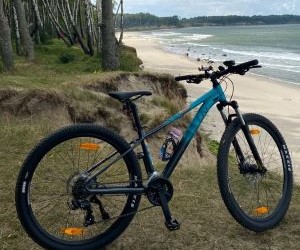Discover the most important cycling safety accessories every rider should have, from helmets to visibility gear, for safer and more confident rides.
HOW DO I PREVENT DEHYDRATION IN HOT CLIMATES?
Hot climates place enormous stress on the body, increasing sweat loss and risk of dehydration. For athletes, outdoor workers, or travelers, managing hydration becomes essential for both performance and safety. This article explores practical strategies to prevent dehydration in high temperatures, covering fluid intake, electrolyte balance, and smart planning for heat exposure.

Understanding dehydration risks
Dehydration occurs when fluid loss exceeds intake. In hot climates, sweating is the body’s primary cooling mechanism, but excessive sweat leads to rapid fluid and electrolyte depletion. Even mild dehydration can impair cognitive function, reduce endurance, and increase risk of heat-related illnesses.
Signs of dehydration
Recognizing early symptoms helps prevent severe consequences. Common signs include thirst, dry mouth, dark urine, dizziness, and fatigue. Severe dehydration may cause confusion, rapid heartbeat, or heat exhaustion—conditions requiring immediate intervention.
Mild: thirst, decreased urination, headaches.
Moderate: muscle cramps, faster pulse, irritability.
Severe: confusion, rapid breathing, fainting.
Chronic: reduced performance, kidney strain.
Why hot climates increase risk
High temperatures accelerate sweat loss, while humidity reduces sweat evaporation, limiting cooling efficiency. Wind and sun exposure amplify water loss through evaporation and radiation. Without proactive hydration, the body quickly falls into fluid deficit.
Hydration and electrolyte strategies
Preventing dehydration in hot climates requires more than just drinking water. Proper timing, electrolyte balance, and fluid choice all play critical roles in maintaining hydration and performance.
Daily hydration habits
Start the day well-hydrated, as entering heat with a fluid deficit increases risk. Aim for clear to light-yellow urine as an indicator of hydration. Spread fluid intake throughout the day instead of relying on occasional large intakes.
Fluids during activity
During exercise or outdoor work in heat, consume 0.5–1 liter of fluids per hour, adjusting for sweat rate and body size. Water is sufficient for short activities, but prolonged exertion requires electrolyte replacement to avoid imbalances like hyponatremia.
Water for short, light activities.
Sports drinks for long or intense sessions.
Electrolyte tablets as a lightweight option.
Coconut water as a natural hydration alternative.
Electrolyte importance
Sodium, potassium, magnesium, and calcium regulate muscle and nerve function. Sweat depletes these minerals, so replenishing them is as important as fluid intake. Balanced recovery meals with fruits, vegetables, and lean protein also aid restoration.
Practical lifestyle adjustments
Beyond hydration strategies, adapting lifestyle habits reduces risk of dehydration in hot climates. Small adjustments in routine, clothing, and planning help maintain fluid balance and comfort.
Timing and planning
Schedule outdoor activities during cooler parts of the day, such as early mornings or evenings. Plan routes with shade or water access, and avoid unnecessary exposure during peak heat hours. Rest breaks reduce strain and allow for fluid replenishment.
Clothing and environment
Lightweight, breathable, and moisture-wicking fabrics keep body temperature regulated. Light-colored clothing reflects heat, while hats or helmets with ventilation protect the head. Sunscreen prevents burns, which further stress the body’s fluid balance.
Plan activities around cooler hours.
Choose shaded or ventilated routes.
Wear breathable, light-colored clothing.
Apply sunscreen to prevent added stress.
Recovery and monitoring
After exposure to heat, prioritize recovery with fluids, electrolytes, and rest. Monitor hydration status daily by checking urine color and body weight. Long-term consistency ensures resilience to repeated heat exposure.
Ultimately, preventing dehydration in hot climates requires a proactive mindset. By combining smart hydration, electrolyte balance, and practical lifestyle adjustments, individuals can stay safe, productive, and energized even in extreme heat.
YOU MAY ALSO BE INTERESTED






